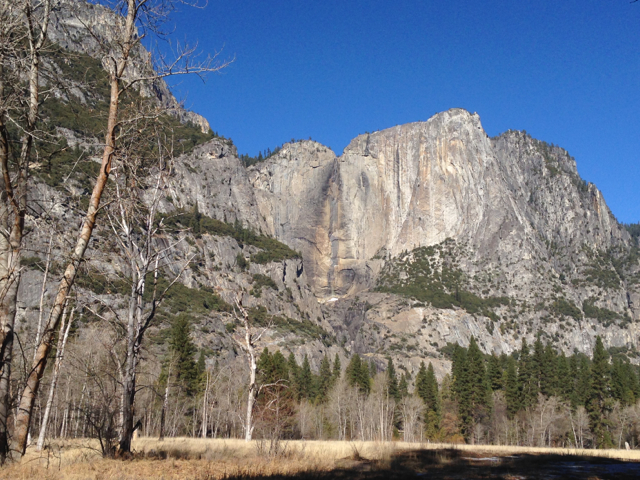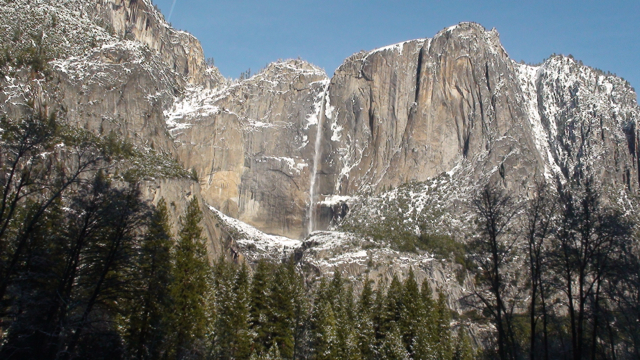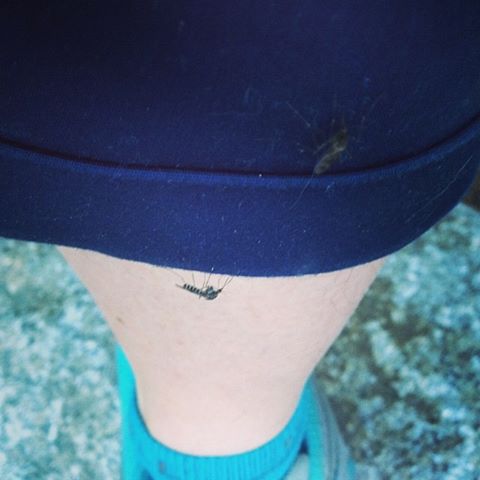As California Director for the National Wildlife Federation, I truly do have the best job in the world. This week, I had the once-in-a-lifetime privilege of attending the release of four fisher kits into Yosemite National Park, part of a historic conservation initiative aimed at increasing the declining fisher population in the region.
Despite living outside of Yosemite and wandering in the Sierra for twenty-five years, I had never seen a fisher in the wild until I watched in awe as the kits emerged from their boxes, tentatively sniffing the air of their new home, then playfully wrestling and chasing each other over a fallen log. Described as having “the face of a weasel and the tail of a fox", the fisher also possesses the trait of being extremely secretive. Sightings of the animal are very rare.
Rachel Mazur, National Park Service, and Craig Thompson, US Forest Service, carry one of the fisher pairs to the release site. Photo by Beth Pratt
Perhaps not surprisingly given its elusive nature, the fisher prefers wild and deep forestland. Unfortunately, habitat loss from development, forest clearing and fires, along with other environmental threats, have taken its toll on the animal throughout the Sierra Nevada. Fishers have disappeared from 50% of their range in California and just two native populations survive. This small, isolated population in the Southern Sierra is listed as threatened by the state and is under consideration for federal listing.
The kits, two sets of siblings, were rescued south of the park after two radio-collared female fishers were killed by predators. Their release back into the wild is part of a four-year effort to reintroduce fishers north of the Merced River in Yosemite National Park, a cooperative effort between the National Park Service, U.S. Forest Service Pacific Southwest Research Station (PSW), Fresno-Chaffee Zoo, and the Fresno Wildlife Rehabilitation Foundation.
A fisher kit plays on a fallen log after his release into the wild. Photo by Bob Roney
Historic records show that fishers once occupied this area, but trapping and logging in the late 1800s and early 1900s likely led to their local extinction. Despite over 70 years of protection, fishers have failed to successfully recolonize the area. Biologists hope that human-assisted migration north of Yosemite Valley and across the Merced River barrier will help increase the long term viability of the population by expanding its distribution.
National Park Service and Forest Service biologists will work together to monitor these four kits. If they survive at rates similar to other juvenile fishers, the population will be augmented in the following years with additional orphans that would have otherwise died if they had not been rescued by researchers.
The fisher kits emerge from their boxes and start checking out their surroundings. Photo by Bob Roney
Craig Thompson of the US Forest Service prepares to release the fisher kits in Yosemite. Photo by Beth Pratt
As I watched one pair of fishers disappear into the woods of their new home, I knew I witnessed a miracle of wild things. I listened to the surrounding chatter of squirrels and birds, the wind rustling the leaves of the trees, the soft patter of rain drops, and knew the call of the fisher would now be restored to the soundscape of the forest. Their call is a part of the natural music that has been missing from this area for too long.
NWF has partnered with biologist Craig Thompson of the U.S. Forest Service and the Integral Ecology Research Center to help support important research and conservation initiatives for the Sierra Nevada fisher.
Donate today to help NWF continue this vital work to ensure the survival of fisher kits!
























